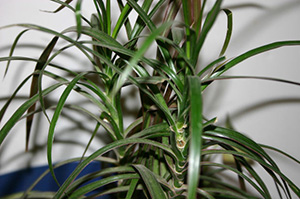 Did you know that the Environmental Protection Agency (EPA) ranks indoor air pollution as one of the top five environmental dangers? Unfortunately, most people are completely oblivious to the potential dangers of polluted air lingering inside their homes, leaving them vulnerable to respiratory infections, asthma, cardiovascular disease, cancer and more. The good news is that you can regain control of your home’s air quality by performing some simple steps.
Did you know that the Environmental Protection Agency (EPA) ranks indoor air pollution as one of the top five environmental dangers? Unfortunately, most people are completely oblivious to the potential dangers of polluted air lingering inside their homes, leaving them vulnerable to respiratory infections, asthma, cardiovascular disease, cancer and more. The good news is that you can regain control of your home’s air quality by performing some simple steps.
Houseplants
In addition to the beautiful aesthetics they offer to a home, houseplants are also able to filter impurities from the air. When bacteria, mold, allergens or toxic chemicals hit the plant’s leaves, they are absorbed and replaced with fresh oxygen. Back in the 1980s, NASA performed a test which verified researchers’ theory that plants do in fact filter volatile organic compounds (VOC) from the air.
To maximize the air purifying benefits of your houseplants, it’s recommend that you dust them on a regular basis. You obviously don’t want use any cleaning chemicals or harsh dusting products, but instead gently wipe down the leaves with a basic feather duster. This should knock off any dust, allowing the plant to attract more impurities from the air.
Water Fountain
You might be surprised to learn than indoor water fountains can improve the air quality inside a home. The water acts as a magnet for unwanted pathogens, allergens, bacteria, etc., essentially catching and trapping it. Best of all, it only takes a small indoor waterfall to filter a room’s air, so don’t assume that you must use some large, bulky model.
If you’re going to use an indoor water fountain for the purpose of purifying air, you’ll need to get into the habit of changing the water on a regular basis. Over time, the fountain’s water will accumulate toxins from the surrounding air. The only way to remove them is by changing, or filtering, the water.
Vacuum
I think we’ve all been guilty of allowing our floors to go unvacuumed for longer than we should. When you’re busy with your normal day-to-day routine, it’s easy to overlook the importance of vacuuming. However, keeping the floors clean is an importance step in reducing indoor air pollution. Dust, bacteria and mold will eventually fall and settle on the floor, at which point it’s your responsibility to vacuum it up.
Don’t just perform a quick run over your floors, but instead take your time to vacuum every nook and cranny in your home. Pay extra attention to places like underneath the furniture, underneath the rugs, and even around the baseboards. If necessary, use a wand attachment to clean the portion of your floor that connects to the baseboards.
